Enquire About
Bio-Composters
RGGC - The forest way of
Composting
RUR Green Gold Tumbler Bio-Composter ensures balance of key composting elements i.e
Air, Temperature and Moisture.
How Does The RGGC Work?
RUR Green Gold Tumbler Bio-Composter ensures balance of key composting elements i.e Air, Temperature and Moisture. These elements make aerobic composting safe and efficient. Therefore, the Green Gold Bio-composters are placed in a ventilated space, like the parking or terrace.
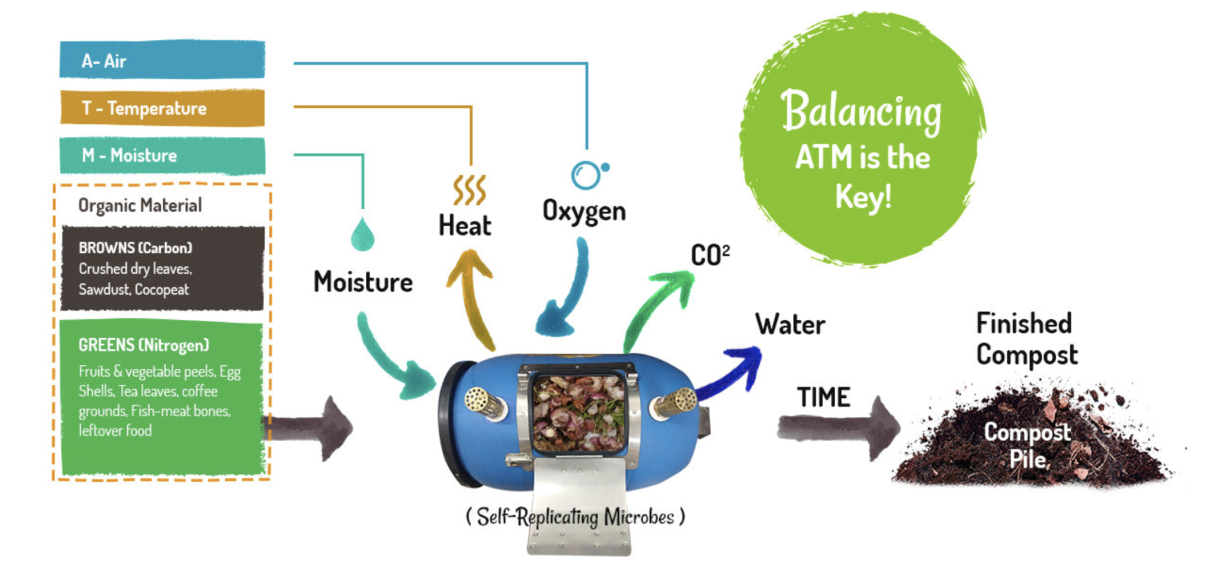
Smart Features

Smart Vents
View Patent +- The brass vents, coated with chromium for superior durability, are integral to the functionality of our RGGC (RUR Green Gold Composter).
- Chromium plating serves as a shield against corrosion, guaranteeing the longevity of these vents. Their primary role lies in facilitating air supply to the compost pile, a crucial aspect of our aerobic composter.
- Continuous aeration, enabled by these vents, ensures the pile remains well-oxygenated, effectively averting the development of foul odors during the decomposition process.
- Brass vents, chromium-coated for durability, are crucial in our RGGC.
- Chromium plating prevents corrosion, ensuring long-lasting performance.
- These vents supply air to the compost pile, vital for aerobic composting.
- Continuous aeration prevents foul odors during decomposition.

Role of Tumbling Mechanism
- Consistent tumbling of the compost pile, ideally conducted at least once a week, stands as a crucial practice for upholding optimal conditions within the RGGC.
- This routine fosters thorough mixing of both older and newer compost materials, thereby facilitating efficient decomposition processes.
- Moreover, the tumbling action serves to break down any clumps that might form within the composter, ensuring a uniform decomposition rate throughout the entirety of the pile.
- At least once a week, is imperative for maintaining optimal conditions.
- This practice promotes thorough mixing of older and newer compost materials, facilitating efficient decomposition
- Additionally, tumbling aids in breaking down any clumps that may form within the RGGC, ensuring uniform decomposition.

Proof of Gold Standard in Compost
View certificate +- Composting epitomizes the principles of a circular economy, wherein waste is transformed into a valuable resource. High-quality compost replenishes soil nutrients, essential for the cultivation of healthy vegetables and crops.
- By maximizing the utilization of compost, we can foster the growth of organic produce, enhancing food security and preserving the integrity of seeds and crops.
- This approach mitigates the reliance on artificial fertilizers, thereby contributing to sustainable agricultural practices.
- Composting epitomizes the principles of a circular economy, wherein waste is transformed into a valuable resource.
- High-quality compost replenishes soil nutrients, essential for the cultivation of healthy vegetables and crops.
Bio Composting
An average family of 4 members generates roughly 600 grams of biodegradable waste daily which can be easily composted at source! At RUR, we provide support and guidance throughout the composting process, enabling you to transform this waste into nutrient-rich compost for your plants.

No Rodents

No Leaks
No Smell

No Electricity

No Additives

Rust Proof
An average family of 4 members generates roughly 600 grams of biodegradable waste daily which can be easily composted at source! At RUR, we provide support and guidance throughout the composting process, enabling you to transform this waste into nutrient-rich compost for your plants.

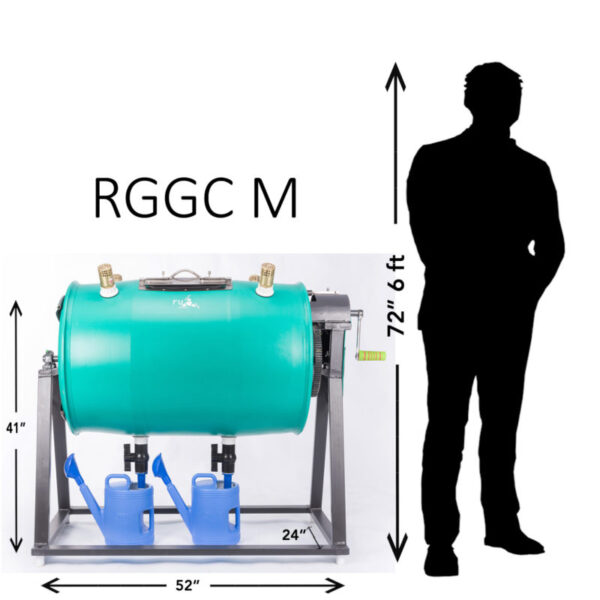
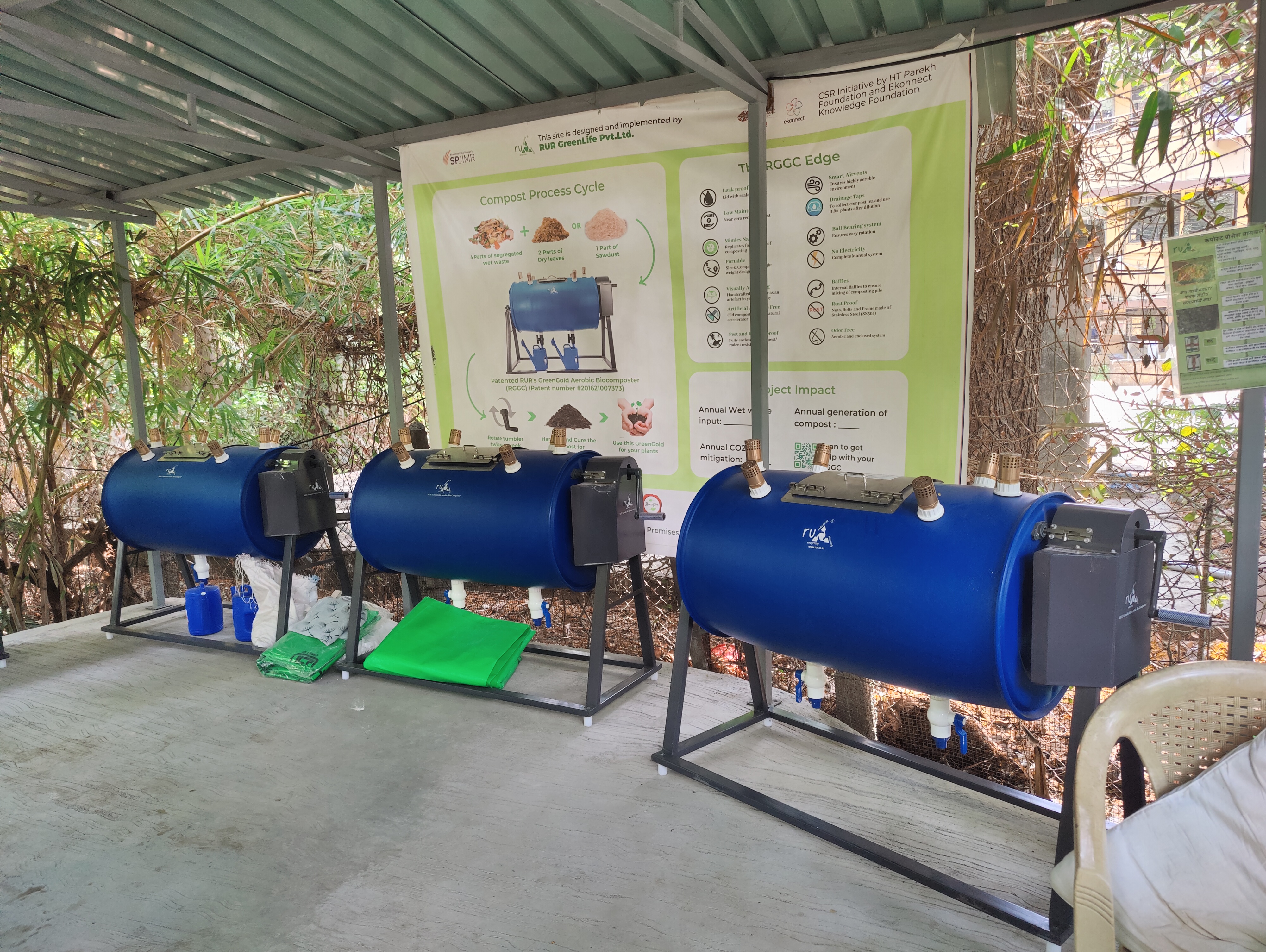

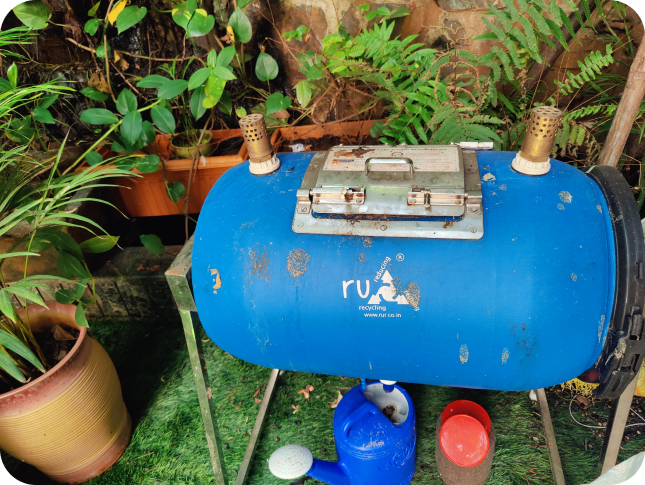

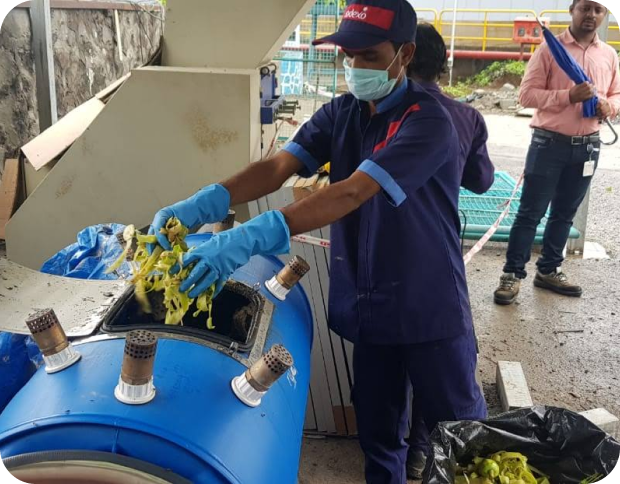
Our innovative solution, the RURs GreenGold Aerobic Biocomposter, is designed with patented, odour free, zero-electricity technology and robust in-vessel features. This composting system offers a convenient and efficient way to compost your biodegradable waste.
Mimics Nature

Easy rotation
Moisture Balance

Low operation cost
Why Should You
Do Composting
01
Conserve landfill space (approximately 55-60% of the waste stream is organic matter)
02
Reduce the production of toxic leachate and GHGs.
03
Reduce carbon foot-print involved in transportation and cost spent in the same.
04
Improve the physical structure of soil.
05
Increase water holding capacity of soil.
06
Enrich soil with micro-organisms and required nutrients, thus reducing dependency on chemical fertilizers.
07
Promote green cover and land remediation, thereby mitigating global warming and climate change.
08
Promote food security through the cultivation of seasonal food, organic fruits, herbs and vegetables from the compost produced.
Online Demo of RGGC
FAQ's
Is it important to chop waste before composting?

Not mandatory for all waste but recommended. Chop Watermelon rind, leafy veggie stalk.
Will Mango seeds and hay compost?

Mango seeds take over 6 months to compost, while hay needs to be chopped before composting.
How do I know if my compost is ready?

It will start to smell of fresh soil, turn black and attain soil like structure
How to use the compost?

Put in potted plants or create a bed with 11 soil compost mix and sow seeds. Replenish compost every month.
Is this same as vermicomposting?

No, vermicomposting requires earthworms, while this process is driven by bacteria and fungus
Are there any risks from these bacteria and fungus?

No, they are beneficial organisms for composting and not pathogenic




